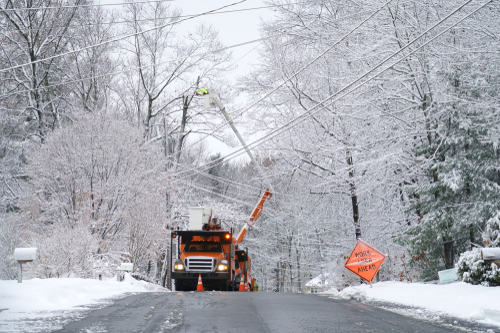ISO New England says region should have resources to meet winter peak demands

A new report from ISO New England, which operates the region’s electric grid, said that New England should have sufficient resources to meet the peak demand for electricity this winter.
“Seeing what’s coming is crucial to navigating any potential power system challenges, and our 21-day energy supply forecast is an operational tool that serves this very purpose,” Gordon van Welie, president and CEO of ISO New England, said. “It gives us situational awareness on energy adequacy over the operating horizon, allowing us to identify potential energy shortfalls while there’s still time to prevent them or lessen their impact.”
According to ISO new England, winter electricity demand is estimated to peak at 20,269 megawatts (MW) during average conditions and 21,032 MW under colder than normal temperatures, a 1.3 percent increase from last year’s forecasts. For context, New England’s all-time winter peak demand reached 22,818 MW in January 2004. Last winter’s demand peaked at 19,529 MW on Feb. 3, 2023, when temperatures averaged 4°F.
ISO New England closely monitors seasonal weather forecasts, and the National Oceanic and Atmospheric Administration (NOAA) is projecting above-normal temperatures in New England this winter. This includes near-normal precipitation for central and northern New England. While an El Niño weather pattern may suggest warmer temperatures overall this winter, it does not preclude the chance of multiple stretches of cold outbreaks that could stress the region’s power system.
Thus, this winter the ISO does not anticipate calling for controlled power outages and would resort to this drastic step only to prevent a collapse of the power system that would take days or weeks to repair. However, if controlled power outages are needed, the ISO would coordinate this action with local utilities, which would then take the necessary actions to lower electricity demand in their areas.
ISO New England utilizes a rolling three-week energy supply forecast, incorporating a variety of factors to provide an early warning to the region should energy supplies become constrained.
